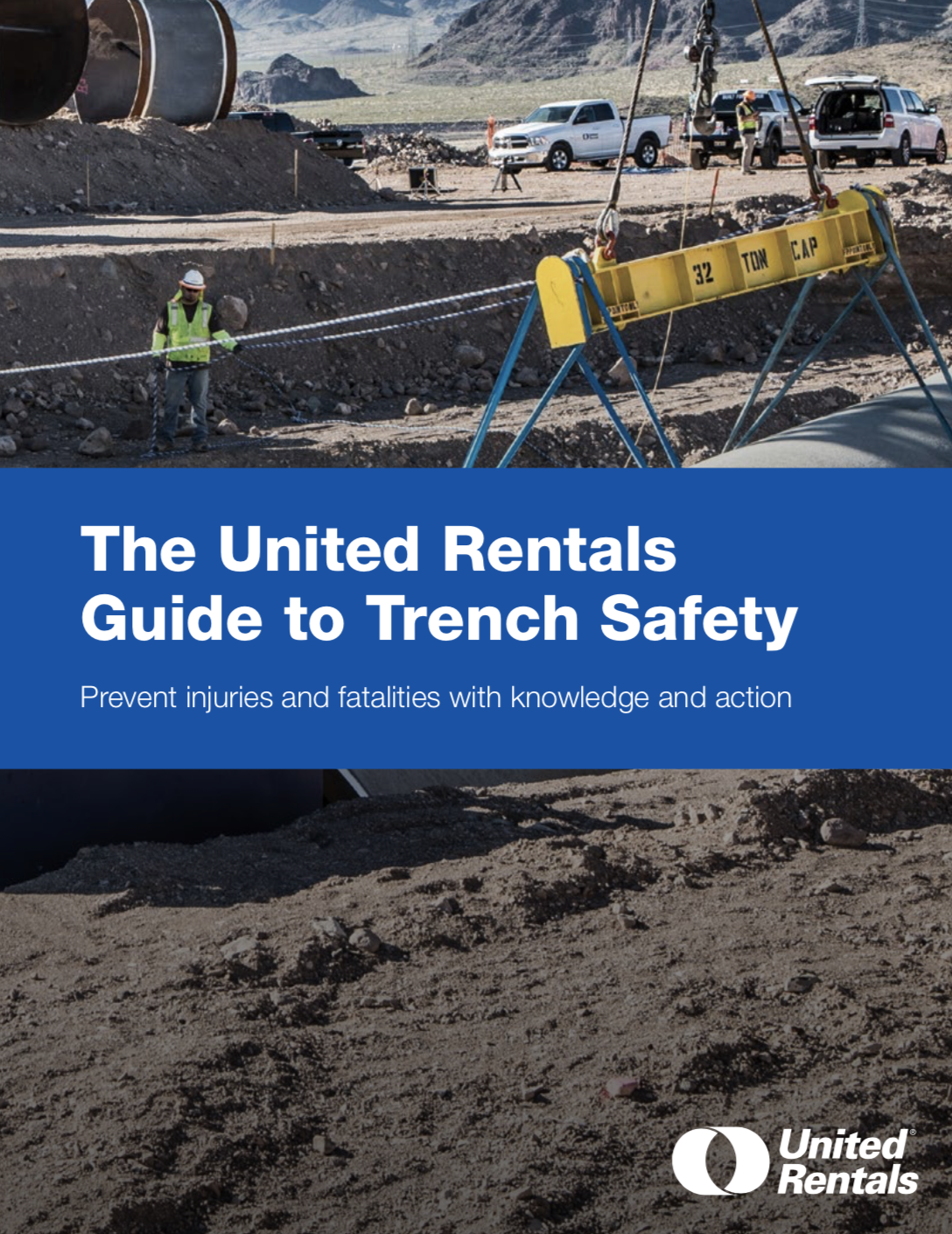Check equipment before installation and at least daily when in use.
When your crew is working in trenches 5, 10 or 20 feet below ground, you want to know the shoring and shielding equipment you’ve installed to protect them is doing its job.
Pre-use inspection
The first step is to ensure the equipment is in optimal operating condition before it arrives at the jobsite.
“The problem is, the OSHA standard is vague on actual procedures for inspecting this equipment, and most of the manufacturers don’t offer guidance,” said Steve Tschepl, district manager for United Rentals’ Gulf district. Because United Rentals is committed to ensuring the quality of the equipment it provides customers, it has developed its own standard operating procedures for inspections.
“We have spent a lot of time and energy developing this procedure and maintaining it across the region,” said Tschepl.
The 11-step process for inspecting a vertical hydraulic shore, for example, includes steps like:
- Pressurizing the shore to a sustained pressure of 750 psi to 1500 psi
- Checking the cylinders for leaking fluids (including the socket side of the cylinder and the threads of the cylinder pad side)
- Checking the overall condition of the hose body
- Checking the cylinder hose connecting cylinders for leaks at the fitting
- Holding the pressure for 60 seconds
Once the equipment has passed the inspection, United Rentals tags it as ready for use and stores it properly.
Contractors who purchase their own shoring and shielding equipment should develop and perform similar pre-use tests for all of it.
“You don’t want to make the newest guy on your crew the competent person, but that happens all the time. That person may not understand the weight of the responsibility that they have. It’s the responsibility of the competent person to ensure that people who are working in excavations are safe.”
Jobsite inspections
OSHA requires every jobsite to have a competent person in charge of overseeing all aspects of the excavation, including the inspection of the shoring and shielding equipment.
This requires a daily check at a minimum, said Tschepl. “But it’s also necessary to do an inspection when there’s a changing condition. That could be a rainstorm or when a shore is accidentally run over or picked up by a backhoe. It’s the competent person’s responsibility to either replace that shoring with another piece of equipment or to inspect and/or test the equipment and put his stamp of approval on it.”
“OSHA standards basically tell the competent person to determine the proper protective system and then to reclassify the soil after changing conditions,” said Tschepl. Rainstorms, water leaks and even sunshine can impact the moisture content of the soil, which could weaken the shoring system.
“Even temperature fluctuations overnight can have a surprising effect on pressure if there’s a big swing,” he added.
Every inspection should include a check of the pressure on hydraulic shores and checks for leaks anywhere in the system, including the hose and the hose connections. If the contractor is using trench boxes, the competent person should do a visual inspection to check for deflections and cracks.
Choosing a competent person
Tschepl said many contractors make a mistake when choosing the competent person in charge of excavation safety. “You don’t want to make the newest guy on your crew the competent person, but that happens all the time. That person may not understand the weight of the responsibility that they have,” he explained. “It’s the responsibility of the competent person to ensure that people who are working in excavations are safe.”
RELATED: Buried Alive: Lessons from a Trench Collapse Survivor
If the competent person lacks sufficient experience, that’s a problem. Safety systems from different vendors may not all work exactly the same, or an excavation may require a different type of shoring. That’s why it’s better to designate an experienced worker or supervisor who has seen many of these as the competent person.
Good training is also essential when it comes to safety inspections. In its trench safety classes, United Academy, the training arm of United Rentals, teaches participants how to inspect shoring and shielding equipment and identify potential problems.
Download the United Rentals Guide to Trench Safety

Freelance writer Mary Lou Jay writes about business and technical developments in a variety of industries. She has been covering residential and commercial construction for more than 25 years.



